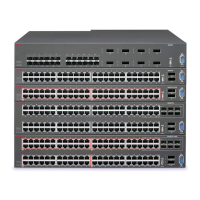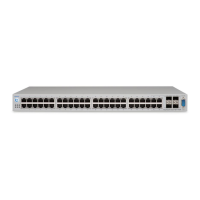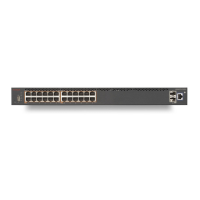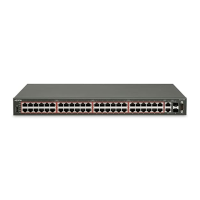Avaya Inc. – Proprietary & Confidential.
Use pursuant to the terms of your signed agreement or Avaya policy.
35
Previously the ERS 8600 was applying a local Access Policy to IPv6 routed SSH packets. Now the system will
route these packets and apply Access Policies to only local destination policy type (SSH, Telnet, HTTP) IPv6
packets. This will no longer cause inappropriate connection issues to remote hosts. (Q02070640-01)
SNMP GET/GET NEXT under certain conditions associated with the MAC (FDB) table was previously not
working properly. These conditions lead to an issue that NetIQ PVQM would not function properly with an ERS
8600. This is now resolved. (Q02113802)
ERS8600 has been modified to now allow proper communication with NetQOS Management Device (generally
used for IPFix data collection) via SNMPv3. (Q02049612-01)
Platform
With both filtering and ingress mirroring enabled on the ERS8600, system instability could be seen under
certain traffic conditions. This is now resolved. (Q02078239-01)
IP fix traffic from the switch to an external collector will no longer be sent with an improper QoS marking of
QOS=7, but instead sent with QOS=0, now placing these packets into the proper default egress queue.
Previously this traffic could potentially interfere with other system management traffic leading to the potential
for system instability when IPFix was enabled. (Q02044640-01)
High CPU utilization on an I/O module co-processor (therefore R/RS only) will no longer result in a loss of
messaging synchronization with the 8692 SF/CPU, which previously could have led to system instability.
(Q02085085)
ERS 8600 will no longer show system instability in while writing to the PCMCIA card with CLI Logging enabled.
(Q02006689-01)
ERS 8600 R and RS module card ports will now initialize multicast and broadcast bandwidth limiting values
properly when these features are enabled. (Q02074960)
Previously when an 8630GBR experienced SW messaging instability to the CP (COP to CP messaging) that
would required a module reset to resolve, the far end port could stay up for 20 seconds, which could lead to a
20 second SMLT blackhole. This was associated with the MAC chip not turning off its laser when the module
was reset. This situation is now resolved, and the 20 second SMLT blackhole will no longer be seen.
(Q02112285)
ERS 8600 will now properly handle IPX packets with a broadcast destination MAC of type RIP or SAP.
Previously this could create a potential issue for routing IPX for E/M modules (R/RS modules do not support
IPX Routing). (Q01997486-04)
Packet throughput performance for jumbo frames at line rate has been improved for the 8612XLRS modules.
(Q02075673)
Filter pattern definitions for HTTP packet streams will no longer impact other protocol traffic. (Q02089688)
Users will now be able to connect to an ERS 8600 using Secure Copy (SCP) with access-level rwa when
access-strict true is also configured. Previously SSH worked, but SCP did not. (Q01767930-01)
ERS 8600 will no longer encounter link flapping upon reboot of an OM1400 edge device running SFFD when
connected to 8630GBR ports. Avaya continues to recommend the use of VLACP over SFFD, except in cases
where the Avaya (or ex-Nortel) product does not support VLACP, such as the OM1400. (02014236-01)
ERS8600 will now properly forward DHCP packets with the DHCP-relay agent configured as the VRRP virtual
IP when the DHCP request has the broadcast flag set. Avaya best practice recommendation continues to be to
configure the DHCP-relay agent IP address as the VLAN physical address and not use the VRRP IP address.
(Q02059607-01)

